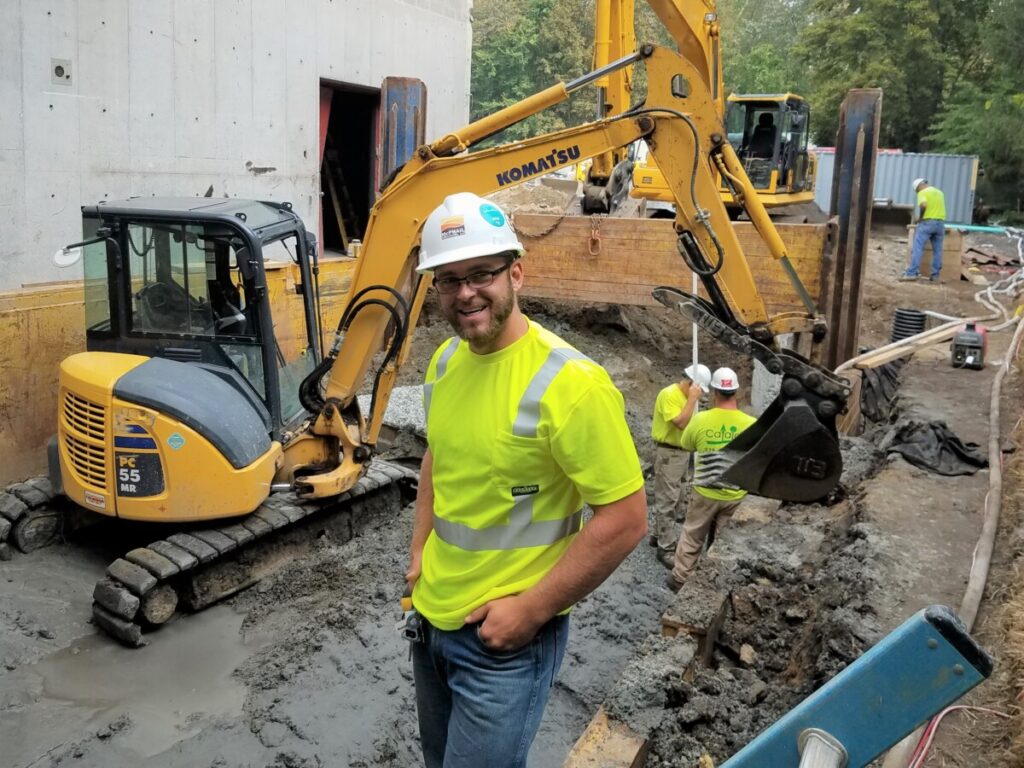Choosing the Right Geotechnical Engineers for Your Following Large-Scale Job
The Interdisciplinary Approaches in the Geotechnical Market: Linking the Space Between Design, Geology, and Environmental Science for Optimum Project End Results
The combination of engineering, geology, and environmental science within the geotechnical sector is not just useful; it is important for achieving optimum task outcomes. What strategies might arise to facilitate this essential cooperation and improve the efficacy of geotechnical methods?
Significance of Interdisciplinary Partnership
The significance of interdisciplinary partnership in the geotechnical market can not be overstated. Efficient geotechnical jobs call for the combination of varied competence from different areas, consisting of engineering, geology, and environmental scientific research. This cooperation guarantees that all aspects of a job are considered, resulting in extensive remedies that address complicated challenges.
Interdisciplinary collaboration cultivates advancement by enabling specialists to share understandings and methodologies that might not appear when operating in isolation (geo tech engineer). By leveraging the toughness of several disciplines, teams can determine potential risks, maximize layout procedures, and enhance the sustainability of geotechnical tasks. Additionally, such partnership promotes a holistic understanding of site-specific conditions, which is crucial for precise evaluation and decision-making.
The complexity of geotechnical projects requires a collaborated approach to problem-solving. When designers, geologists, and ecological researchers function with each other, they can develop a natural technique that straightens technical requirements with environmental considerations and regulatory conformity. This synergy not just boosts task results but additionally adds to the lasting durability of infrastructure. Ultimately, interdisciplinary partnership is essential for advancing ideal practices and accomplishing excellence in the geotechnical industry.
Key Roles of Each Self-control
Collaboration amongst various techniques is not just useful; it is crucial for the effective implementation of geotechnical projects. Each technique-- design, geology, and environmental scientific research-- plays a distinctive yet interconnected duty that adds to forecast effectiveness and sustainability.
Geotechnical engineers are mostly in charge of creating structures and making certain structural stability. They assess soil and rock residential properties to analyze load-bearing capabilities, offering important data for secure building practices. Their knowledge allows the formulation of innovative solutions to intricate difficulties.

Ecological researchers examine the prospective effects of building and construction on communities and water resources. They carry out environmental evaluations and establish mitigation strategies to lessen negative results. By incorporating ecological considerations, they make sure compliance with policies and promote sustainability throughout the job lifecycle.
Case Researches of Successful Integration
Effective assimilation of geotechnical disciplines can be exemplified through various study that highlight the effectiveness of synergy in resolving intricate design challenges. One notable instance is the building and construction of the Hong Kong-- Zhuhai-- Macau Bridge, where a collective websites strategy involving geotechnical design, geology, and environmental scientific research was vital. Rock hounds and engineers functioned in unison to assess the seabed conditions and enhance the structure style, ensuring stability and lessening ecological effect.
One more impactful instance is the renovation of incline stability in the San Francisco Bay Location, where an interdisciplinary team combined geotechnical analysis with ecological evaluations. By incorporating geological studies and hydrological research studies, the team efficiently determined prospective landslide risks and applied effective mitigation measures, boosting safety and security and sustainability.
Moreover, the redevelopment of Brownfield sites typically calls for a multidisciplinary approach. In one case in Chicago, partnership amongst geotechnical engineers, ecological scientists, and city coordinators led to the effective remediation of contaminated dirt, permitting for the secure makeover of the site into an area park. These study show that interdisciplinary cooperation not just addresses technical challenges yet likewise fosters innovative remedies that profit both jobs and click for more info areas.
Difficulties in Multidisciplinary Projects

Furthermore, collaborating schedules and process among various groups can be troublesome, specifically when each technique has special task turning points and deliverables. This misalignment can lead to hold-ups and enhanced costs. The obstacle of source allowance also looms huge; ensuring that specific expertise is readily available at vital points requires mindful preparation and insight.
Finally, regulatory compliance presents another substantial difficulty. Each discipline may encounter various regulative frameworks, and aligning these needs to meet job purposes can be complex and lengthy. Dealing with these challenges demands solid leadership and efficient communication methods to promote collaboration and ensure that multidisciplinary groups function cohesively towards shared objectives.
Future Trends in Geotechnical Practices
As the geotechnical industry advances, arising trends are reshaping techniques to deal with the obstacles encountered in multidisciplinary tasks - engineer of record. One significant trend is the raised combination of sophisticated modern technologies, such as expert system and equipment discovering, into geotechnical evaluation and style. These technologies improve anticipating modeling and threat evaluation, allowing engineers to make more educated decisions throughout the project lifecycle

In addition, the adoption of digital doubles and real-time surveillance systems is becoming extra prevalent. These devices facilitate ongoing analysis of dirt problems and architectural performance, permitting timely treatments when concerns arise.
Final Thought
In conclusion, the integration of design, geology, and ecological scientific research is vital for accomplishing optimal outcomes in the geotechnical market. Effective case researches illustrate the benefits of this method, while recognizing the challenges encountered in multidisciplinary projects.
The assimilation of design, geology, and ecological scientific research within the geotechnical market is not simply advantageous; it is important for achieving ideal task outcomes. Effective geotechnical projects call for the combination of varied experience from various fields, consisting of design, geology, and environmental science.Browsing the complexities of multidisciplinary projects in the geotechnical sector provides numerous substantial challenges.As the geotechnical sector progresses, emerging patterns are improving practices to attend to the challenges dealt with in multidisciplinary tasks. Geotechnical engineers are progressively working together with ecological researchers to make certain that tasks align with sustainability goals and conform with governing requirements.